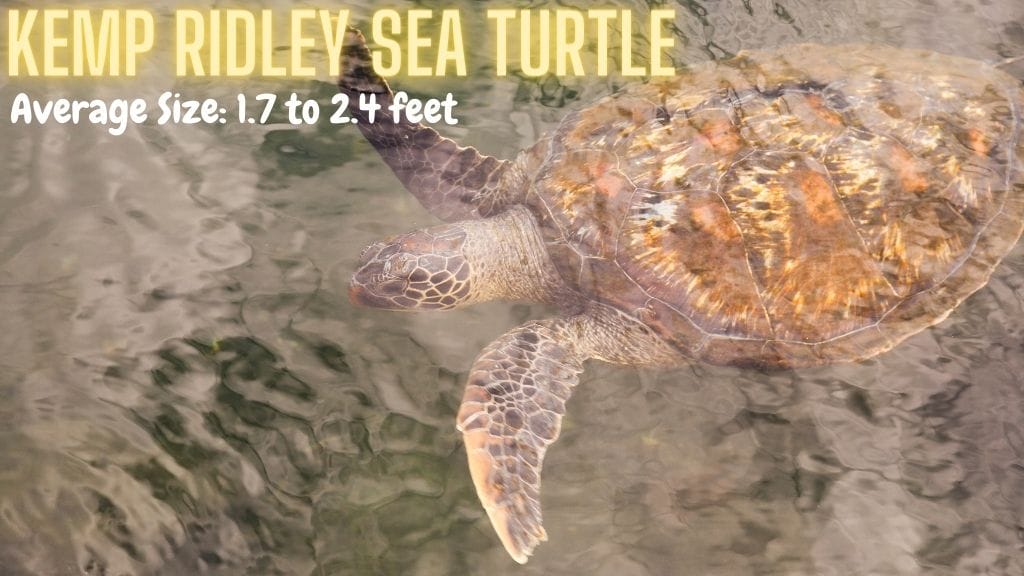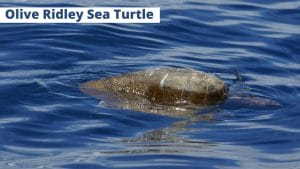Lepidochelys kempii (Kemp’s Ridley Sea Turtle)
Home > Turtle Database > Lepidochelys kempii (Kemp’s Ridley Sea Turtle)

Kemp’s Ridley Sea Turtle is a small marine turtle with a round, grayish-green shell and a lighter underside. It is often found in warm coastal waters and is known for its unique nesting behavior. Its numbers have been low, making it one of the most endangered sea turtles on the planet.
Native To These Regions
Florida (USA), Louisiana (USA), Tamaulipas (Mexico), Texas (USA), Veracruz (Mexico)Native Turtle Species Map – Find Turtles by Region
Scientific Classification
- Kingdom: Animalia
- Phylum: Chordata
- Class: Reptilia
- Order: Testudines
- Family: Cheloniidae
- Genus: Lepidochelys
- Species: L. kempii
Common Names
This turtle is widely known as Kemp’s Ridley Sea Turtle and sometimes as the Atlantic Ridley.
This Hilarious Turtle Book Might Know Your Pet Better Than You Do
Let’s be real—most turtle care guides feel like reading a textbook written by a sleep-deprived zookeeper.
This one’s not that.
Told from the snarky point of view of a grumpy, judgmental turtle, 21 Turtle Truths You’ll Never Read in a Care Guide is packed with sarcasm, sass, and surprisingly useful insights.
And hey—you don’t have to commit to the whole thing just yet.
Grab 2 free truths from the ebook and get a taste of what your turtle really thinks about your setup, your food choices, and that weird plastic palm tree.
It’s funny, it’s honest, and if you’ve ever owned a turtle who glares at you like you’re the problem—you’ll feel seen.
Identification
-Description
They have a broad, oval carapace that is usually olive-gray in adults. Their plastron is yellowish, and they have a hooked beak for feeding on shellfish.
-Sexual Dimorphism
Adult females are slightly larger than males. Males tend to have longer tails and more curved claws.
Check more turtles from the Lepidochelys genus
Native Origin and Distribution
-Geographical Range
They are mostly found in the Gulf of Mexico, especially along the coasts of Texas and Mexico. Some also travel along the Atlantic coast of the United States.
Preferred Habitat
They prefer shallow coastal areas with sandy or muddy bottoms. This allows them to find shellfish and other prey more easily.
Behavior
Feeding Habits
They feed on crabs, clams, and other bottom-dwelling shellfish. They use their powerful jaws to crush their prey.
Predators
Sharks, large fish, and some marine mammals hunt them. Eggs and hatchlings are also eaten by raccoons, birds, and other land predators.
Reproduction
Breeding Season
They nest mostly from April to June. Females come ashore in groups, known as arribadas, to lay their eggs.
Reproductive Method
They lay eggs on beaches, burying them in sand to incubate. The hatchlings emerge and head straight for the water.
Conservation
Extinction Status
They are listed as critically endangered.
Threats
Fishing nets, egg collection, and habitat loss reduce their numbers. Pollution and climate change also harm their nests and feeding areas.
Conservation Measures
Protective laws, monitored nesting beaches, and turtle-safe fishing gear help them recover. Hatcheries release many young turtles back into the wild.
Economic Importance
They attract ecotourism since people visit beaches to witness nesting. Some communities once relied on their eggs and meat, but this is now discouraged.
Interesting Facts
They are the smallest of the sea turtles. Their mass nesting events are a remarkable sight, involving hundreds of females emerging onto the beach at once.

About Author
Muntaseer Rahman started keeping pet turtles back in 2013. He also owns the largest Turtle & Tortoise Facebook community in Bangladesh. These days he is mostly active on Facebook.












